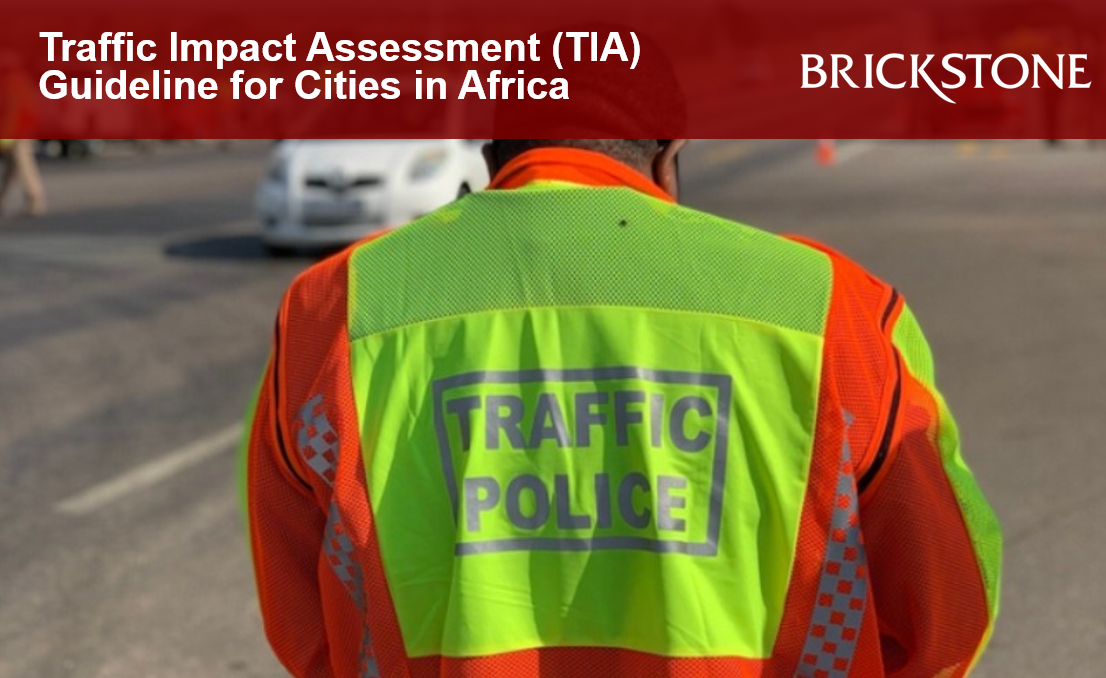Traffic Impact Assessment (TIA) Guideline for Cities in Africa
TIA Guideline for Cities in Africa
Traffic Impact Assessment (TIA), also known as Traffic Impact Study, is a technical study generally required by roads authorities assessing the effect that a particular development including housing, commercial centers, ports, airports, and stations, has on the transportation network in a particular country.
The African Development Bank developed the Traffic Impact Assessment (TIA) Guideline for Cities to improve urban traffic management and mobility in the fast growth and construction of cities in Africa. The need was heightened as a result of the severe traffic congestion the continent is faced with, due to the rapid growing rate of urban population.
This article by Brickstone, reviews the Traffic Impact Assessment (TIA) Guideline for Cities in Africa.
The Traffic Impact Assessment (TIA) Guideline for Cities in Africa
According to the African Development Bank, the The Traffic Impact Assessment (TIA) is a step -by-step valuable resource of good practice for urban traffic management professionals, from the planning and regulatory authorities to private sector developers.
The guidelines offer a technical approach for undertaking a Traffic Impact Assessment (TIA) for any type of building or infrastructure development, intended to account for traffic congestion, lower delays, lower carbon emissions, and increase the accessibility of existing and new developments while contributing to cleaner air quality.
The guidelines are required for developments that are of a size or type that will generate significant additional traffic and have an impact on the adjacent road network. Such developments include improvement or construction, transformation and environment projects.
The Traffic Impact Assessment (TIA) Guidelines mainly target Government Agencies, Private Developers, Planners, Architects, and Engineers, and TIA Consultants.
The following are the key objectives of the Traffic Impact Assessment (TIA):
- Assess the development accessibility, circulation, and safety of all modes i.e. pedestrian, cyclist, public transport, private vehicles, service (goods), and emergency vehicles.
- Assess the integration between the development and the surrounding area for the different transport modes.
- Determine the impact of development traffic on the surrounding transport network and land uses.
- Develop feasible plans to avoid, manage, and mitigate development impacts.
Components of a Traffic Impact Assessment (TIA)
A typical Traffic Impact Assessment (TIA) is structured to include the following components:
- The Proposed Development: The developer should provide a brief description and background of the proposed project or development; a table showing the Land Use and Area Statement of the development including the Gross Floor Area (GFA) and/or Number of Residential Units; location map of the development Site showing the proximity to the adjacent road network; the Construction Program of the Development; and development Land Use changes and/or the Zoning approval for the proposed.
- The Study Basis and Planning Assumptions: A clear understanding of the basis and assumptions for undertaking the Traffic Impact Assessment (TIA) should be established upon an agreement being reached between the Developer/TIA Consultant and relevant Government Agencies.
- Analysis of Existing Conditions: A comprehensive inspection of the Study Area should be conducted for each projects, which must briefly describe the Land-use and zoning of the Development Site; other ongoing or planned developments adjacent the Site; condition and type of roads and intersections (both capacity-wise and physical); parking conditions, e.g. on-street parking supply, illegal parking; public transportation system. Location of relevant stops; pedestrian and bicycle infrastructure and usage; and traffic volumes and congested locations.
- Traffic Surveys and Data Collection: Developers should conduct traffic Surveys to collate datas on roadways or intersections based on the discussion and agreement with the Local Government Agency prior to the execution of the surveys.
- Site Access and Circulation Review: This is to be undertaken to ensure that the new Development allows for safe movement, efficient circulation, and suitable access for all types of users within the site boundary and the adjacent surrounding area with respect to public Right of Way.
- Trip Generation and Parking Demand: While trip generation is the process of estimating the amount of traffic that will be generated by a Development, depending on its Land Use Type, parking demand refers to the number of parking spaces required for such Development.
- Trip Distribution, Mode Split and Assignment: While trip distribution is the process of establishing the origin and destination of the trips arriving or departing from a Development, mode split is the process of estimating the number of travellers that are anticipated to use other modes of transportation other than private cars to arrive or depart from such Development. Traffic Assignment is the process of determining the amount of development generated traffic that will use each route in the road network and the amount of turning movement traffic at an intersection.
- Projected Traffic Flow: The developer must provide the projected traffic flows for the agreed assessment scenarios and peak hours, which must include Background Traffic Flows – Existing Condition; Background Traffic Flows – Opening Year Condition; Opening Year Total Traffic Flows (Background + Development Traffic) and Future Year Total Traffic Flows (Background + Development Traffic).
- Capacity Analysis: Capacity Analysis should be performed by the Developer, using suitable Traffic Analysis Tools and software as agreed with the Local Agency to assess the impact of a Development.
- Safety Analysis: The Traffic Impact Assessment (TIA) should evaluate and identify potential safety and operational issues.
- Proposed Mitigation Measures: Where it is established that a proposed development poses adverse impact threats on the existing and future transport system, the developer must develop a plan to mitigate such impacts.
- Conclusions and Recommendation: This section of the Traffic Impact Assessment (TIA) should essentially include a summary of all findings from the assessment.
Read more here.
Why not contact us to make your Project Happen
Our advisors and consultants would be able to schedule an online meeting with you to discuss your project with the overall objective of seeking ways to achieve the “bankability” and protection of the long term asset value of your project. Request a Meeting Now





